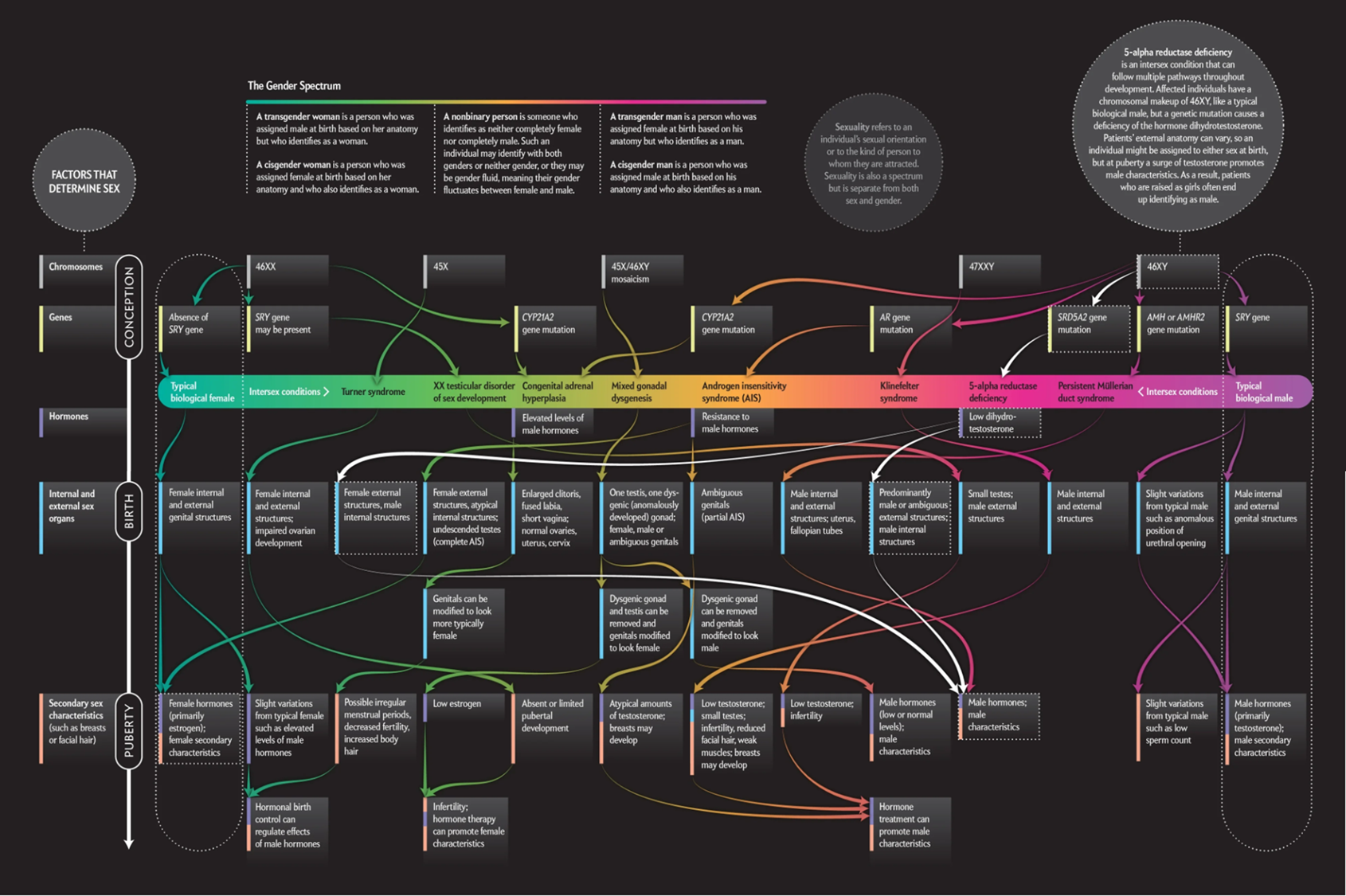8.7 Variations in Human Sex Differentiation

Sex can be considered in terms of genotypic sex and phenotypic sex. Genotypic sex is focused on the individual’s sex chromosomes, X and/or Y and the genes involved. Phenotypic sex considers an individual’s internal and external genitalia. As we will see in this section, natural variation for genotypic sex and phenotypic sex exists in humans. In other words, not all males have exactly the same sex characteristics, and not all females have the same sex characteristics. Many people have intermediate characteristics. Some people may be intersex, which is a broad term for anybody born with reproductive characteristics that do not fit the typical definitions of female or male.It is hard to know exactly how many intersex people exist. This is because some intersex traits are not easily observable and some do not develop until later in life. The best estimate is that 1.7% of people are born intersex [2]. You can compare this to the ~0.3% chance of having identical twins. Considering how many identical twins you know, it is likely that you know even more intersex individuals! Intersex folks are not diseased or disordered. Historically, many natural human differences have been framed as medical issues. However, intersex traits are simply another example of human variation that exists on a continuum. These traits could be in their genitalia, hormones, internal anatomy, or chromosomes.
Intersex Variations

You can view, and zoom in on, the full size image here.
Variation in Sex Chromosomes
As we explored in Section 8.6, humans have a chromosomal sex determination system. Most often, this means individuals with two X chromosomes do not have the SRY gene and therefore develop female sex organs and secondary sex characteristics. Individuals with an X and Y chromosome do have the SRY gene, on their Y chromosome, and develop male sex organs and secondary sex characteristics.
However, what happens when other variations occur? Look more closely at the variations in chromosomes found at the top of the factors that determine sex in Figure 8.26. There are individuals with only 45 chromosomes; these individuals have one X chromosome and do not have a second sex chromosome. If you follow the arrows down you’ll see these individuals have female internal and external sex organs, but they typically have underdeveloped ovaries resulting in low estrogen. This means without intervention they will not have puberty development and will be infertile.
Variations in Genes
What if a person is 46XX, meaning they have two X chromosomes, but an SRY gene is found on at least one of those X chromosomes? This person will have male external genitalia, but it can range from being phenotypically normal to ambiguous. This is because if an SRY gene is present then the signals needed for male differentiation are present. However, these individuals will have small testes and therefore experience infertility.
As you can see from Figure 8.26, there exists a large amount of human variation in sex differentiation. If you’d like to find out more about other human sex variations check out InterACT.
Check Yourself
Given the following scenarios determine whether the individual is likely to produce eggs or sperm.

